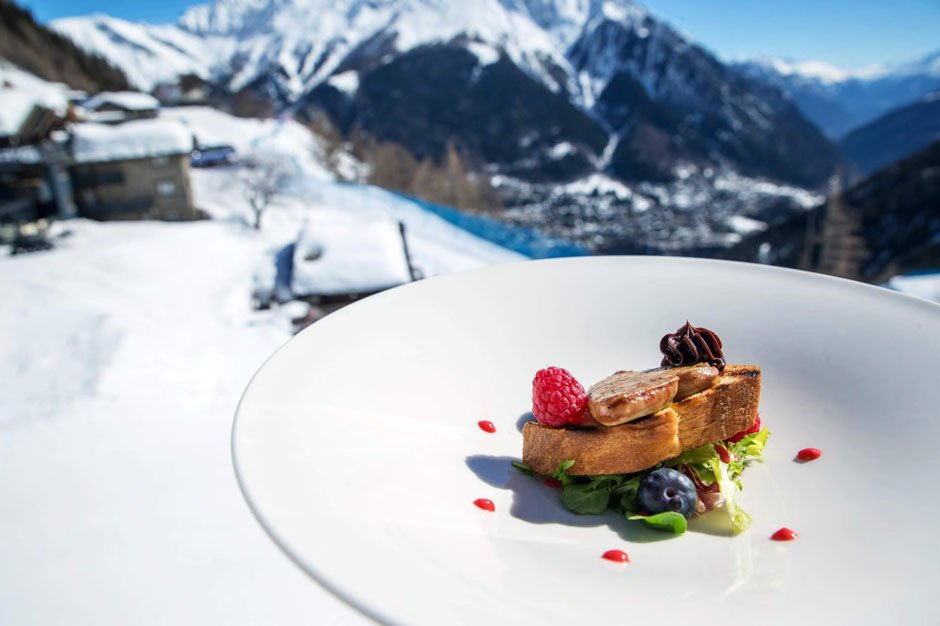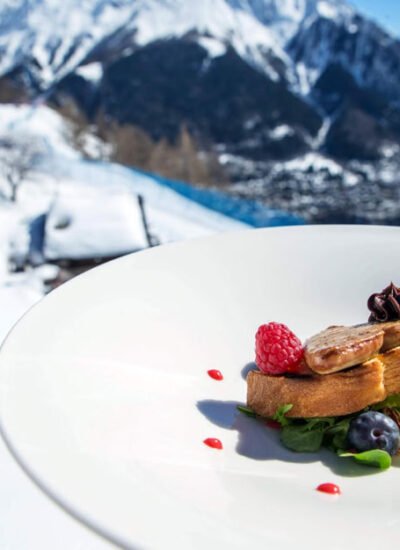 The perfect ski holiday is a combination of exhilarating slopes with exceptional dining experiences. For culinary enthusiasts who also enjoy winter sports, certain European resorts stand out for their gastronomic offerings as much as their pistes. These alpine destinations have changed mountain dining from simple sustenance to sophisticated cuisine, creating memorable food experiences against stunning snowy backdrops.
The perfect ski holiday is a combination of exhilarating slopes with exceptional dining experiences. For culinary enthusiasts who also enjoy winter sports, certain European resorts stand out for their gastronomic offerings as much as their pistes. These alpine destinations have changed mountain dining from simple sustenance to sophisticated cuisine, creating memorable food experiences against stunning snowy backdrops.
1. Courchevel, France – Michelin Stars in the Mountains
For those planning ski holidays in France, Courchevel has an unparalleled combination of world-class skiing and gourmet dining. This prestigious resort in the Three Valleys has an impressive concentration of Michelin-starred restaurants, with seven establishments sharing twelve stars between them. This makes it the winter sports destination with the highest density of Michelin accolades worldwide. Le 1947 at Cheval Blanc, helmed by Chef Yannick Alléno, holds the coveted three-star status, serving innovative interpretations of traditional Savoyard cuisine. Besides the starred establishments, the resort has over 70 restaurants ranging from casual mountain eateries to refined dining rooms, making sure there are options for every palate and budget.
2. Alta Badia, Italy – Gourmet Ski Safaris in the Dolomites
The Italian Dolomites combine breathtaking scenery with the country’s renowned culinary traditions. Alta Badia’s unique “Gourmet Ski Safari” allows visitors to ski between mountain huts where Michelin-starred chefs create special dishes highlighting local ingredients and traditions. The region’s distinct Ladin culture influences its cuisine, creating dishes found nowhere else in Italy. Local specialities include tutres (fried pastries with spinach and cheese) and canederli (bread dumplings) served with rich mountain broths.
3. Sölden, Austria – Dining at Ice Q
Sölden’s architectural marvel, Ice Q, sits perched at 3,048 metres above sea level. This glass-walled restaurant gained international recognition after featuring in the James Bond film “Spectre”. Beyond its cinematic fame, Ice Q has sophisticated alpine cuisine focusing on regional ingredients prepared with modern techniques. The restaurant’s wine cellar, housing over 250 fine vintages, complements meals with perfect pairings. Austria’s tradition of gemütlichkeit (cosy hospitality) makes it’s mountain dining particularly inviting, with Ice Q representing the pinnacle of this welcoming approach.
4. Val Thorens, France – High-Altitude Culinary Delights
As Europe’s highest ski resort at 3,200 metres, Val Thorens has snow reliability and exceptional dining. The resort has changed from basic accommodations to a destination for discerning food enthusiasts. La Maison Blanche has earned acclaim for its innovative approach to mountain cuisine, offering dishes like venison with wild mushrooms and mountain herb emulsions. For those seeking authentic Savoyard specialities, the resort’s traditional restaurants serve perfect renditions of cheese-laden classics including raclette and tartiflette.
5. Chamonix, France – Traditional Alpine Fare
Chamonix combines dramatic Mont Blanc views with a great culinary scene. This historic resort town offers everything from cosy cheese-focused bistros to refined contemporary dining. The valley’s proximity to both Italy and Switzerland has influenced its food culture, creating a fusion of Alpine traditions. Local restaurants pride themselves on showcasing regional products, including Reblochon and Beaufort cheeses, mountain charcuterie, and seasonal produce. Many visitors also pair their ski holiday with a broader 4-Day Vacation in France, making it easy to enjoy both the slopes and France’s cultural highlights.
The après-ski scene here is legendary, with busy restaurants and bars creating a festive atmosphere after the lifts close.
These European resorts show that exceptional dining experiences can be as memorable as the skiing itself, changing a winter sports holiday into a sensory adventure combining outdoor exhilaration with culinary excellence.





Leave a Reply